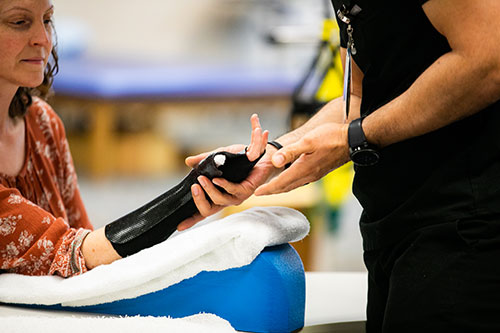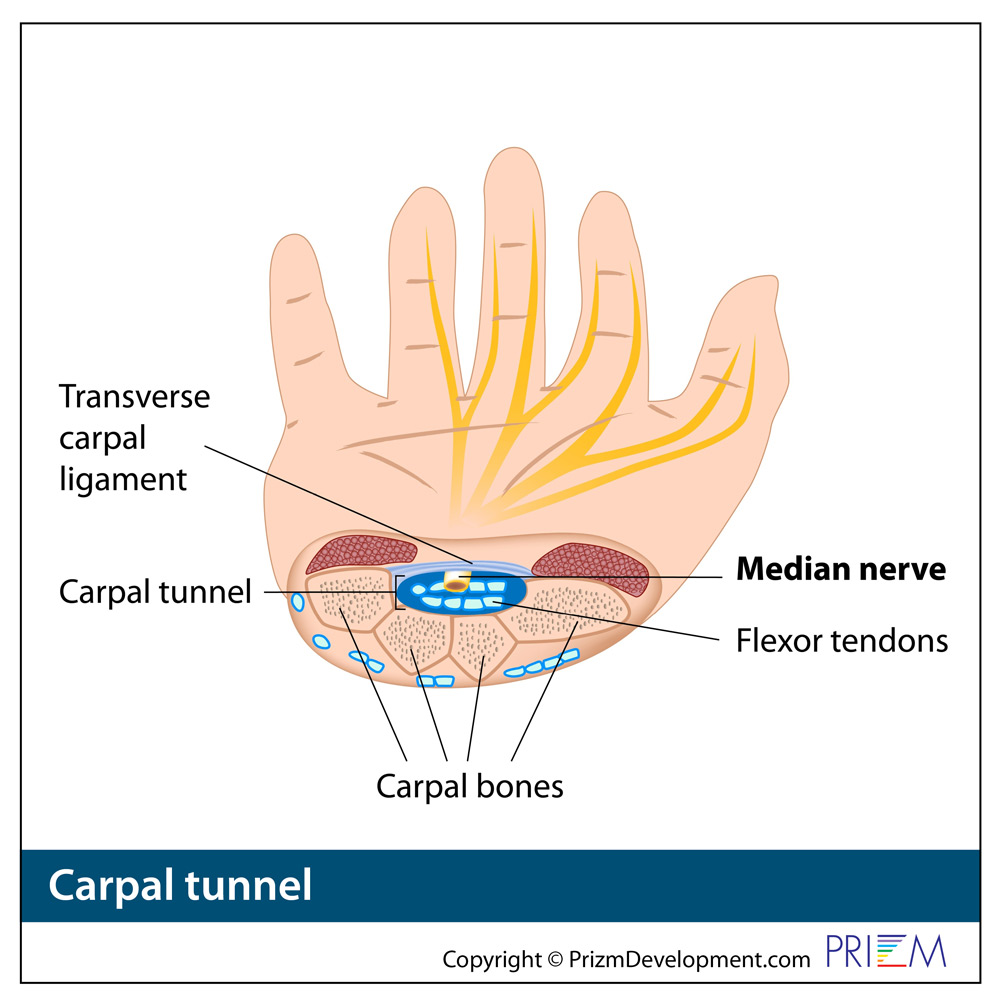Carpal Tunnel Syndrome
 Carpal Tunnel Syndrome
Carpal Tunnel Syndrome
Although there are many disorders of the hand and wrist, one of the most common is carpal tunnel syndrome (CTS). It often affects workers who perform repetitive hand movements, such as typing or assembly tasks, and causes numbness, tingling and burning. Although CTS can be painful and debilitating, it is also highly treatable if diagnosed early.
Symptoms
Your symptoms usually begin gradually, without a specific injury and may occur at any time. In most people, the symptoms are more severe on the thumb side of the hand. Because many people sleep with their wrists curled, symptoms at night are common and may awaken you from sleep. Daytime symptoms frequently occur when holding something, like a phone, or when reading or driving. Moving or shaking the hands often helps decrease symptoms.
The most common symptoms of carpal tunnel syndrome include:
- Numbness, tingling, and pain in the hand
- An electric shock-like feeling mostly in the thumb, index, and long fingers
- Strange sensations and pain traveling up the arm toward the shoulder
Symptoms initially come and go, but over time they may become constant. A feeling of clumsiness or weakness can make delicate motions, like buttoning your shirt, difficult. These feelings may cause you to drop things. If the condition is very severe, muscles at the base of the thumb may become visibly wasted.
Causes
The carpal tunnel is a tunnel in the center of the wrist containing tendons and a major nerve. CTS is caused when too much pressure is put on the median nerve which runs through the wrist. This can be due to swelling, thickening or irritation of the membranes that surround the tendons in the carpal tunnel.
Common causes include:
- Repetitive grasping with the hands
- Repetitive bending of the wrist
- Bone dislocation and fractures
- Fluid retention
- Hypothyroidism
Treatment Options
 Getting an early and accurate diagnosis is extremely important, both to relieve pain and to help prevent permanent nerve damage. Your Lakelands Orthopedics hand specialist will take a medical history and will perform a physical exam. Other tests such as X-rays, a nerve conduction study or an electromyogram may be performed.
Getting an early and accurate diagnosis is extremely important, both to relieve pain and to help prevent permanent nerve damage. Your Lakelands Orthopedics hand specialist will take a medical history and will perform a physical exam. Other tests such as X-rays, a nerve conduction study or an electromyogram may be performed.
If diagnosed and treated early, carpal tunnel syndrome can be relieved without surgery. Many symptoms can be relieved by simply changing activities, wearing a soft splint on the wrist to help hold it in a straight position, or taking an anti-inflammatory medication to relieve the pain.
If your symptoms do not improve through these treatments, then our hand specialist may suggest carpal tunnel release surgery. As the word “release” implies, the ligament that forms the roof of the canal is cut to relieve the pressure on the median nerve. This is a brief procedure and can be performed on an outpatient basis, often under local anesthesia.
This procedure can be performed endoscopically using a smaller incision, or through a common “open” approach. In open carpal tunnel release, the physician makes a small incision, usually around two inches in length.
Recovery
You will be monitored in the recovery room after your procedure. Your hand will be bandaged and your arm will be elevated and will be in a well-padded dressing. You will be able to begin using the hand immediately.
A follow-up visit to your physician will be arranged and you will be given instructions about your home recovery and rehabilitation. You can expect tenderness at the incision site until complete healing occurs. Patients can usually return to normal activities in a few weeks.
Our hand therapists may prescribe exercises to help improve circulation, motion, and muscle strength. Post-operative therapy is not always necessary. Your Lakelands Orthopedics hand physician should be consulted if stiffness, scar tenderness, persistent pain, or weakness develops after surgery.

 Arm & Hand
Arm & Hand